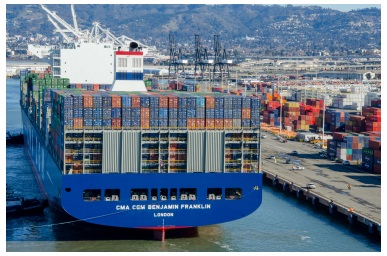Operations: Baltimore, Oakland
![]() Print this Article | Send to Colleague
Print this Article | Send to Colleague
Operational responsibility for the intermodal container service at the Port of Baltimore has been transferred from CSX Intermodal Terminals to Ports America Chesapeake under an agreement reached between the two companies.
"With the expansion of the Panama Canal, we see tremendous growth opportunities at the Port of Baltimore," said Ports America CEO and President Michael Hassing. "Having direct on-dock access to rail service is a significant competitive differentiator for the Port of Baltimore, enhancing its attractiveness as one of only three East Coast ports equipped to handle super-post-Panamax ships, which will expand our ability to attract new freight."
"CSX remains committed to working with the port, the state and the city to support the continued growth of intermodal freight movements and to connect Maryland businesses and consumers to new markets in the Midwest and the south via CSX’s extensive rail network," said CSX Intermodal Terminals President Wilby Whitt. "Our agreement with Ports America will ensure that the port’s needs are continually met today and in the future."
In 2010, Ports America Chesapeake assumed operational control of the Seagirt Marine Terminal through a public-private partnership with the Maryland Port Administration (MPA) and began a $500 million investment program.
Said MPA Executive Director Jim White, "This agreement between CSX and Ports America Chesapeake is the first step in creating a business model that will work long term. It provides the frequency needed and its on-dock where it belongs. This also will help us become more competitive with attracting discretionary cargo destined for the Midwest."
The Seagirt Marine Terminal is a 284-acre facility featuring berthing with a 50-foot draft that is serviced by four super-post-Panamax cranes; seven post-Panamax cranes (including three dual-hoist cranes); and 16 rubber-tired gantry cranes. The facility makes an average of 38 container moves per hour, according to Ports America.
Largest container ship ever in U.S. leaves Port of Oakland; due back in February
The 1,310-foot megaship CMA CGM Benjamin Franklin departed the Port of Oakland January 4 following a weekend visit and an earlier call at the Port of Los Angeles. With its 18,000-TEU capacity, "Big Ben" is the largest container vessel to visit U.S. ports.
"This was a milestone event," said Port Maritime Director John Driscoll. "We proved the Port of Oakland can handle big ships efficiently and the entire Bay Area got caught up in the excitement of global trade."
The visit was viewed as a trial-run to determine if big ships can work effectively on the U.S. West Coast.
More than 2,200 cargo containers were moved on and off the CMA CGM Benjamin Franklin Saturday and Sunday, January 2 and 3. Cargo operations concluded on schedule Sunday night. Port officials reported no problems with cargo handling equipment or staffing levels.
"The CMA CGM Benjamin Franklin's call at the Port of Oakland was made possible thanks to a tight collaboration with all stakeholders at the Port," said Marc Bourdon, President of CMA CGM (America) LLC, a subsidiary of CMA CGM, the vessel's operator. "By welcoming the largest container ship ever to call at U.S. ports, authorities have demonstrated their willingness to be part of an ever growing shipping industry."
CMA CGM Benjamin Franklin is scheduled to make a second West Coast visit in February.

CMA CGM Benjamin Franklin preparing to berth at the Ports America Outer Harbor container terminal.
Photo/Port of Oakland

